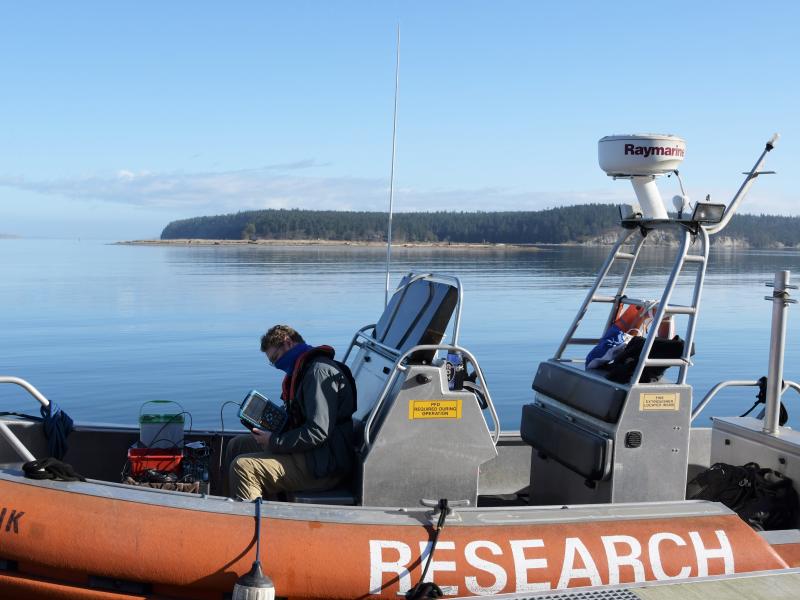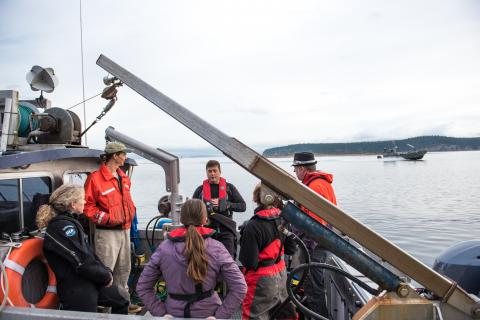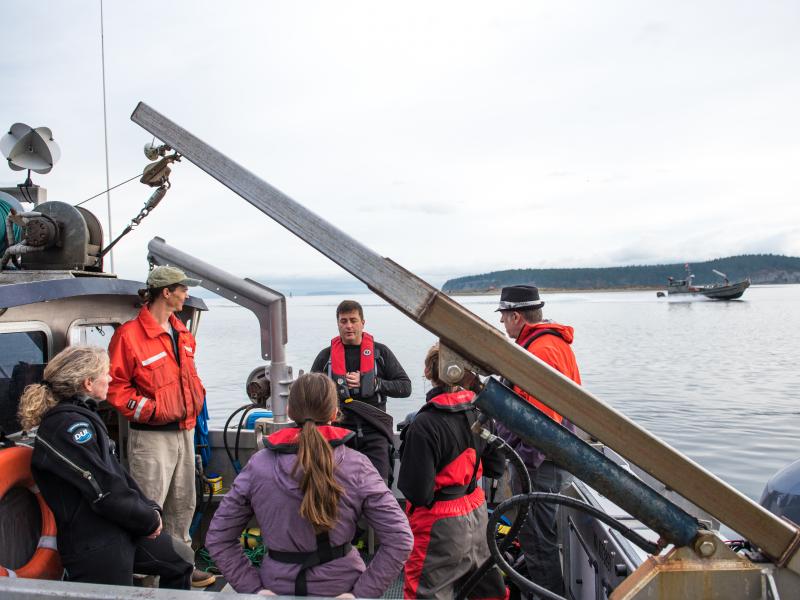
FOA Technology Development
Since the project’s beginnings, Triton has worked with project awardees funded through a Department of Energy funding opportunity announcement (FOA) to support the development of innovative monitoring technologies and advance their technical readiness level for in-water deployment.

This FOA was released in March 2016 in response to a workshop titled, “Instrumentation for Monitoring around Marine Renewable Energy Converters,” which identified a need to better understand the state of instrumentation and capabilities for monitoring around current energy converters (e.g., turbines) and wave energy converters.
The FOA supported six projects focused on underwater noise, electromagnetic field measurements, studies of marine organism interaction, benthic habitat mapping techniques, and integrated marine sensor packages to improve our understanding and environmental monitoring of marine energy devices, including:
- BioSonics Inc.
- Integral Benthic Habitat Mapping
- Integral NoiseSpotter
- University of Washington Drifting Acoustic Instrumentation SYstem (DAISY)
- University of Washington’s 3rd Generation Adaptable Monitoring Package (3G-AMP)
- Woods Hole Oceanographic Institution Electromagnetic Field Detection
Researchers at the Marine and Coastal Research Laboratory at PNNL-Sequim provided permitted testing locations, facilities, and technical support to each of the FOA projects. Pacific Northwest National Laboratory fisheries biologists, ocean engineers, modelers, oceanographers, electricians, data scientists, environmental protection engineers, and scientific divers all came together to bring these technologies to life from baseline testing, benchmarking improvements, software and hardware development, and field testing before final demonstration. This support included technical development for these projects, improvements to the electronics systems, and interface modifications to help make the technologies more effective, reliable, user-friendly, and able to withstand harsh marine conditions.
As the technical readiness level for each project advanced, technologies were deployed in higher-energy testing environments at tidal or wave test sites, including the PacWave test site, the U.S. Navy Hawai'i Wave Energy Test Site, and around the CalWave wave energy converter at the Scripps Institution of Oceanography. There, they are deployed in unforgiving ocean environments to do what they are designed for: to monitor the environment around deployed marine energy devices. For the Integral Consulting, Inc. benthic habitat mapping and NoiseSpotter™ projects, this final test was a success. Currently, the Triton team is supporting BioSonics, Inc., University of Washington 3G-AMP, and DAISY, and the Woods Hole Oceanographic Institution electromagnetic field detector as they prepare for these final demonstrations.
